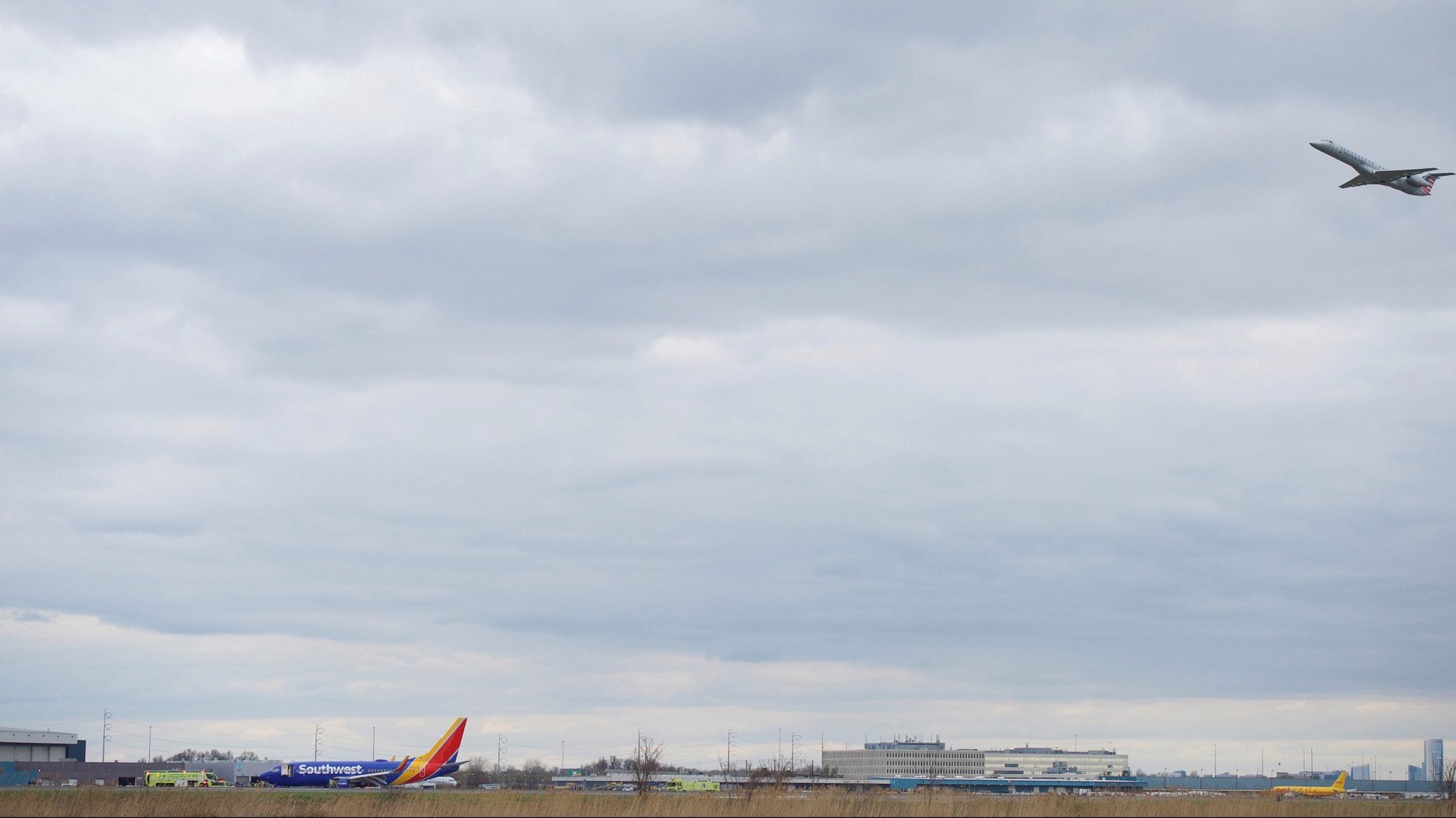If Southwest has a Boeing 737 problem, the airline industry has a big problem too
Another Boeing 737 operated by Southwest Airlines was forced to make an unexpected landing today (May 2) when one of its windows was damaged mid-flight. The plane, en route to Newark from Chicago, landed in Cleveland with no injuries reported.


Another Boeing 737 operated by Southwest Airlines was forced to make an unexpected landing today (May 2) when one of its windows was damaged mid-flight. The plane, en route to Newark from Chicago, landed in Cleveland with no injuries reported.
This incident comes almost two weeks to the day after a Southwest plane made an emergency landing when debris from an engine explosion shattered a window. The April 17 incident on Flight 1380 resulted in the first accident-related fatality to occur on a US commercial airline since 2009.
While the two events sound similar at face value—both involved window damage mid-air followed by an unexpected landing—it is still unknown what caused today’s incident. After the April 17 incident, the Federal Aviation Administration ordered mandatory inspections of certain variants of the CFM56-7B engines, including its fan blades. The airline had previously opposed a recommendation by the engine’s manufacturer to inspect the blades on their planes after metal fatigue was found to be the reason behind the engine failure and emergency landing of a Southwest plane in 2016.
If today’s event did end up having a similarly engine-related cause, that would be a huge problem for Southwest, whose entire fleet is comprised of 737s. But it would pose an even bigger issue for the global airline industry. The CFM56-7B engine and 737 aircraft is the most widely-used combination in commercial aviation worldwide. If a design problem were at fault, a great deal of the industry’s aircrafts could need to be retrofitted or worse, grounded.
A statement from the airline to Business Insider said in part: “The Crew of Southwest Flight 957, with scheduled service from Chicago-Midway to Newark, made the decision to divert the plane to Cleveland for maintenance review of one of the multiple layers of a window pane.” They have not released details of the cause and noted that the incident was a diversion, not an emergency landing (paywall).
Richard Aboulafia, an aerospace industry analyst, says a systemic problem is unlikely. While he notes that a full investigation of Flight 1380 is warranted, he believes what happened with Flight 957 was likely a freak incident. Despite the initial similarities, he said, there are other non-engine related factors that could cause this type of window damage, such as a manufacturing fault, or a small ding on the ground being exacerbated when the pressure changed.
“It’s been more than 40 years since the creation of Southwest. With all these planes constantly in use—sometimes flying six or seven or eight times per day—and very few incidents—in the annals of transporting people that is almost impossibly safe,” Aboulafia said.